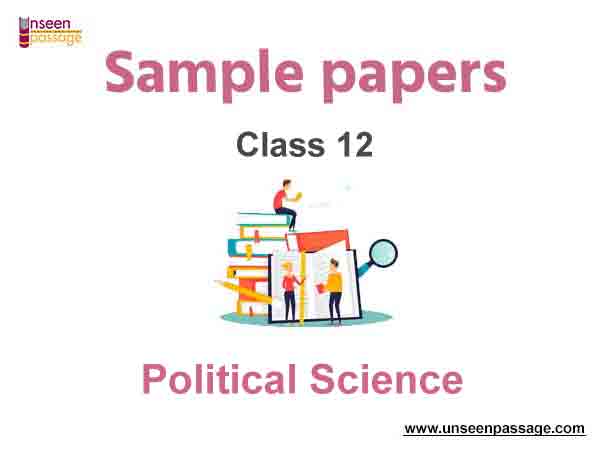Geographical Perspective on Selected Issues and Problems MCQ Class 12 Geography
Please refer to Chapter 12 Geographical Perspective on Selected Issues and Problems MCQ Class 12 Geography with answers below. These multiple-choice questions have been prepared based on the latest NCERT book for Class 12 Geography. Students should refer to MCQ Questions for Class 12 Geography with Answers to score more marks in Grade 12 Geography exams. Students should read the chapter Geographical Perspective on Selected Issues and Problems and then attempt the following objective questions.
MCQ Questions Class 12 Geography Chapter 12 Geographical Perspective on Selected Issues and Problems
The Geographical Perspective on Selected Issues and Problems Quaternary Activities MCQ Class 12 Geography provided below covers all important topics given in this chapter. These MCQs will help you to properly prepare for exams.
Question. By 2050, how much of the world population is expected to live in cities-
a. 1/3rd pop.
b. 2/3rd pop.
c. Total pop.
d. No change in pop.
Ans.
B
Question. Jhabua (M.P) is largely inhabitated by which of the following tribal group-
a. Santhals
b. Bhils
c. Gonds
d. Munda
Ans.
B
Question. Which one of the following river is highly polluted-
a. Brahmaputra
b. Satluj
c. Yamuna
d. Godavari
Ans.
C
Question. Which of the following deceases is caused by water pollution-
a. conjunctivitis
b. Diarrhorea
c. Respiratory infections
d. Bronchitis
Ans.
B
Question. Which of the following place is the role model for ecological restoration-
a. Dharavi
b. Talcher
c. Daurala
d. Mahim
Ans.
C
Question. Which of the following naturàl activities is responsible for air pollution?
a. Volcanic eruption
b. Landslide
c. Mudflow
d. Earthquake
Ans.
A
Question. What is the main source of pollution?
a. Solid waste
b. Crops
c. Animals
d. Forests
Ans.
A
Question. Name the disease caused by water pollution.
a. Bronchitis
b. Diarrhoea
c. Conjunctivitis
d. Respiratory infections
Ans.
D
Question. In which city of India Dharavl one of the Asia’s largest slums is located?
a. Chennai
b. Mumbai
c. Bengaluru
d. New Delhi
Ans.
B
Question. Which of the following is a natural source of air pollution?
a. Vehicles
b. Burning fuelwood
c. Volcanoes
d. Industries
Ans.
C
Question. Which town along the banks of Yamuna is polluted?
a. Lucknow
b. Mathura
c. Kanpur
d. Varanasi
Ans.
B
Question. Which of the following are the most polluted rivers of India?
a. Indus and Beas
b. Tapi and Narmada
c. Ganga and Godavari
d. Ganga and Yamuna
Ans.
D
Question. Land degradation is not the result of:
a. Erosion
b. Salinity
c. Alkalinity
d. Forests
Ans.
D
Question. In which town, do vehicles emit the most carbon monoxide?
a. Delhi
b. Mathura
c. Kohima
d. Jhansi
Ans.
A
Question. By 2050, how many people will live in towns?
a. 1/4th
b. 1/3rd
c. 2/3rd
d. 3/4th
Ans.
C
Question. Name the anthropogenic sources of water pollution.
a. Soil erosion
b. Decay and decomposition of plants and animals
c. Mud flow
d. Sewage
Ans.
D
Question. Push and pull factors are responsible for:
a. Migration
b. Slums
c. Land degradation
d. Air pollution
Ans.
A
Question. River Ganga flows through which of the following states?
a. Uttar Pradesh
b. Delhi
c. Odisha
d. Madhya Pradesh
Ans.
A
Question. Which of the following is the cause of acid rain ?
a. water pollution
b. land pollution
c. Noise pollution
d. Air pollution
Ans.
D
Question. Which of the following is not the source of noise pollution-
a. Use of pesticides
b. aircrafts
c. automobiles
d. factories
Ans.
A
Question. As per 2011 census, India’s rural population is –
a. 75%
b. 72%
c. 70%
d. 68%
Ans.
D
Question. Which of the following place is the Asia’s largest slum-
a. Dharavi
b. Talcher
c. Jhabua
d. Mahim
Ans.
A

